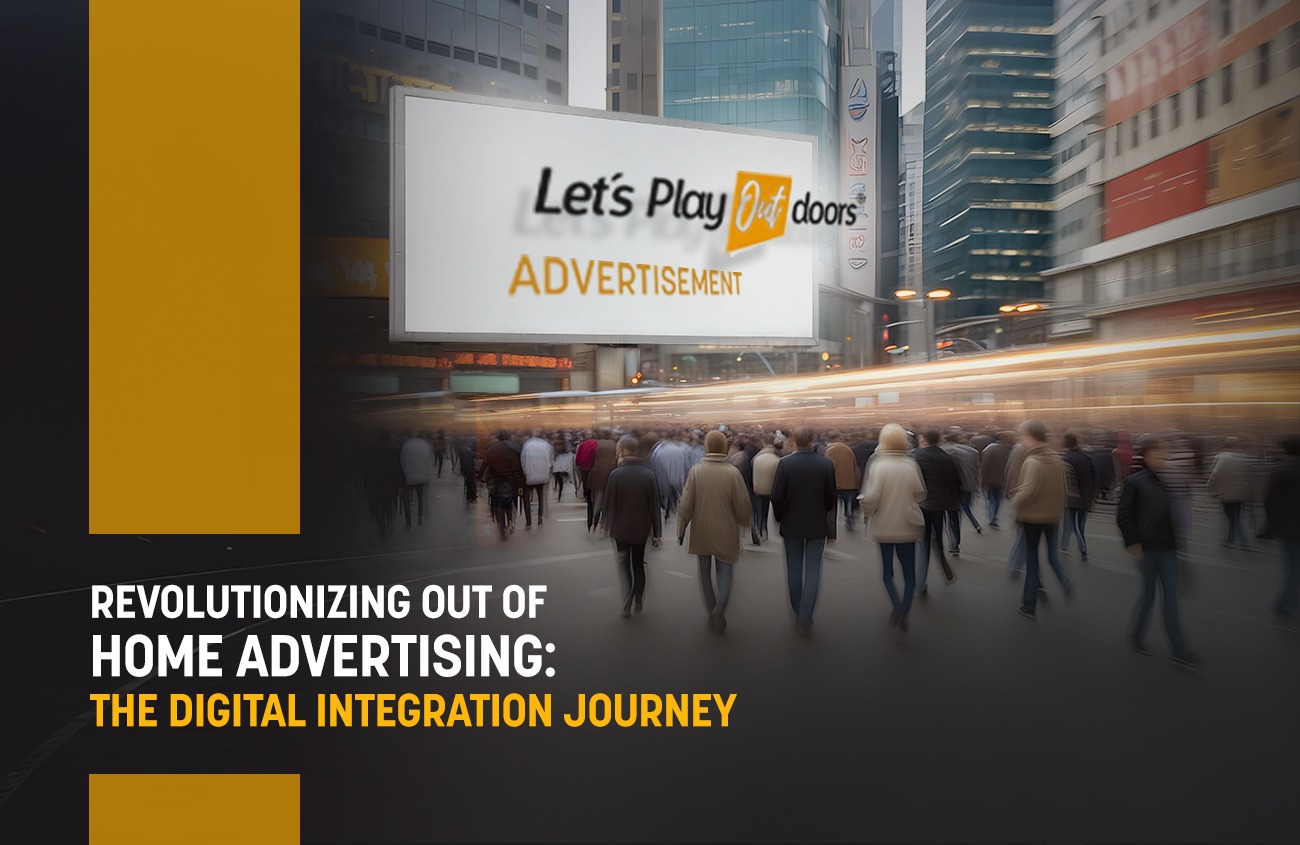Revolutionizing Out of Home Advertising: The Digital Integration Journey
- By CHAMS DIGITAL
- May 20 , 2024
Billboards, posters, and transit ads have been the main forms of out-of-home advertising. Its current evolution can be attributed to the incorporation of digital technology, which has fundamentally changed how businesses and customers engage with each other in real life. Rather than being static displays, these interactions are now dynamic and interactive. But the change, or better still, the transition to the digital era, illustrated in the aforementioned example, is not only a fad; rather, it is a revolution that has fundamentally altered the nature of outdoor advertising.
1-The Dawn of Digital OOH Advertising
The advent of digital technology has breathed new life into OOH advertising. Digital Out of Home (DOOH) advertising encompasses a range of formats, including digital billboards, interactive kiosks, and smart screens. These innovations offer unparalleled flexibility and engagement, allowing advertisers to deliver timely, contextually relevant content.Imagine walking through Times Square, where the billboards change in real-time to reflect the latest social media trends, weather conditions, or even the time of day. This dynamic nature of DOOH advertising captures attention more effectively than traditional static ads, making it a powerful tool for brands.
2-Personalization at Scale
One of the most significant advantages of digital integration in OOH advertising is the ability to personalize content. Using data analytics and audience insights, advertisers can tailor messages to specific demographics, locations, and even individual consumers. This level of personalization was unimaginable with traditional billboards. For example, digital billboards can now display different ads based on the time of day. A coffee shop might advertise morning brews to early commuters, while a restaurant might promote dinner specials in the evening. This targeted approach not only enhances the relevance of ads but also increases their impact and effectiveness.
3-Interactivity and Engagement
Digital technology enables interactivity, turning passive viewers into active participants. Interactive kiosks and screens invite consumers to engage with the brand in meaningful ways. Whether it's a touchscreen that allows users to explore product features or a QR code that leads to an augmented reality (AR) experience, interactivity drives deeper engagement. Consider a bus stop equipped with a digital screen that allows commuters to play a game while waiting. Not only does this create a memorable experience, but it also provides valuable data on user preferences and behavior, which can be used to refine future advertising campaigns.
4-Real-Time Data and Adaptability
The integration of digital technology in OOH advertising allows for real-time data collection and adaptability. Advertisers can monitor the performance of their campaigns and make adjustments on the fly. This agility is crucial in today’s fast-paced world, where consumer preferences can change overnight.For instance, a clothing brand can update its digital billboards to feature the latest fashion trends as soon as they emerge. This immediacy ensures that the brand remains relevant and top-of-mind for consumers. Moreover, real-time data can help advertisers identify high-traffic locations and optimize ad placements for maximum visibility.
5-Sustainability and Cost-Effectiveness
Digital OOH advertising is not only more engaging but also more sustainable and cost-effective. Traditional billboards require printing and physical installation, which can be both time-consuming and environmentally taxing. In contrast, digital screens can be updated remotely, reducing waste and lowering operational costs.Moreover, the ability to schedule multiple ads on a single digital screen maximizes the utility of the space, providing more value for advertisers. This flexibility allows for creative experimentation, as brands can test different messages and visuals without incurring additional production costs.
6-The Future of OOH Advertising
The digital integration journey is far from over. As technology continues to evolve, the possibilities for OOH advertising are endless. Emerging technologies such as artificial intelligence (AI), virtual reality (VR), and the Internet of Things (IoT) are poised to further revolutionize the industry.AI-powered billboards could analyze facial expressions to gauge consumer reactions and adjust content accordingly. VR could transport consumers to immersive brand experiences right from a bus stop. IoT could connect digital screens with other smart devices, creating a seamless, interconnected advertising ecosystem.
In conclusion, the digital integration journey is converting out-of-home advertising into a dynamic, interactive, and data-driven medium. As organizations continue to embrace these advancements, the distinction between the digital and physical worlds will dissolve, opening up new chances to engage and fascinate people like never before. Welcome to the future of advertising, which is happening right outside your door.
